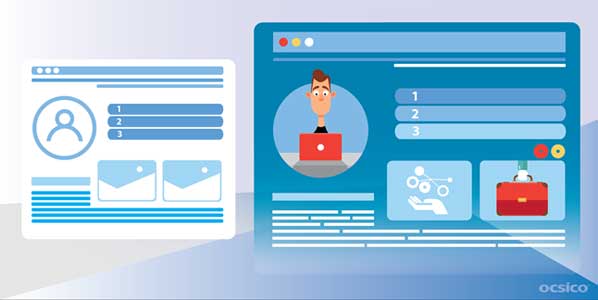
IT services providers emphasize the creation of UX design as it’s one of the key criteria that make customers appreciate an application or a system. But what about the pre-project stage of software development?
Not everybody realizes that design can be crucial for the project in its initial phase. Human beings perceive most of the information through their eyes. Considering this fact, the teamwork of designers and business analysts can engross customers and push them to sign a contract with a software vendor. So, how does it work?
Issues impeding cooperation between a potential client and software provider
Applying to web application development for the first time is not a piece of cake for inexperienced customers. They get puzzled by a large number of questions asked by sales managers and business analysts. Some clients get annoyed by this. But IT specialists don’t have superpowers, and they are unable to read minds and anticipate clients’ requirements.
It results in a customer and a development services provider speaking different languages. Clients want to be aware of what they are investing in, and for good reason. The paradox of this situation is that IT consultants have all the answers, but it might be really hard to convey them to a customer, who is not on it. Such misunderstanding can lead to ceasing cooperation with a software development provider.
Any application or system is an important investment for customers. Before signing a contract with your company, they need to latch on to the advantages of a would-be solution. The right decision is to convince potential customers by visualizing a business idea for them. This will expose your commitment to the job and will raise your stock as a client’s software provider. And this is where UX design joins the game.
UX design smooths things over
Creating UX specification can mitigate snags caused by numerous questions and “the language barrier”. When prospective customers receive a splendid UX wireframe, they get the deeper understanding of a new solution and become engaged.
Once a client has turned to a software development company, designers and business analysts accept “intrigue the client” mission. Initially, only 20% of information is provided by a client, and 80% is left for the flight of fantasy. In this situation, relying on the creativity of your team can help discover new opportunities, you may not even be aware of.
Despite insufficient information about the project and customer’s expectations, the professionals can visualize the client’s idea and provide a designer’s mockup and several UX wireframes. Their work becomes the pillar of a business proposal.
Does a software development company risk by creating UX design without having gathered a sufficient number of requirements? Yes, it does. The designer’s vision can fall short of customer’s expectations. But this approach is worth trying. If you fail to win a new customer, the financial losses still will be minimal. You can comfort yourself that at least you tried. In case of success, you’ll improve your company’s image and win client’s loyalty. By the way, even a negative feedback can be useful since it arms you with information about your customers’ vision.
Possible variants of customer’s reactions
1. It’s too naïve!
You should realize that you can’t become an expert in your client’s field in a short period of time. In this situation getting feedback is crucially important. If your proposal caused some reaction and inspired leaving feedback, you should know that you have a good chance to succeed. It means that a customer has a stake in your proposal and can provide you with more accurate requirements to a project. Creating UX specification allows you to show your proactive position and readiness to admit and correct mistakes.
2. Can you make some changes?
There is always a gap between developers and customers. Since each of them specializes in different fields and speaks different languages when it comes to software development. To bridge the gap of misunderstanding, invite your potential customer to a briefing to discuss all the details. It could result in a renovated UX design proposal and a short-term contract for business analysis services. In any case, you will push your client a step closer to a better understanding of the upcoming project peculiarities.
3. How much is it going to cost?
If your customer asks this question, be happy. It means you’ve managed to meet customer’s requirements and expectations. It’s time to discuss the terms of further cooperation and get down to work on the project.
More tips
1. Preliminary UX design helps you minimize risks by doing a more accurate project estimation. Visualizing the concept allows avoiding unexpected additional tasks that might raise the project cost.
2. Secure your company from financial losses in case a client suddenly decides to end cooperation. Discuss the details and gather users’ requirements only under the contract for business-analysis services.
3. Ease the task for your business analysts and designers – use Agile software development methodology. It provides you with an opportunity to quickly visualize sprints and instantly get customer feedback.
Don’t be afraid to try
UX design can add value to the pre-project stage of software development and grant an opportunity to attract more customers. It’s also important to realize that this concept has all chances to suit your company, but at the same time, it might not work for others. The only way to understand whether preliminary UX design brings you success or not is to try it out with your team and draw conclusions.
About the author
Helena Bogdanova is a Tech Journalist with OCSICO. She writes about IT, healthcare, custom medical software, mobile applications, video games and more. You can contact Helena via Helena.Bogdanova@ocsico.com.




